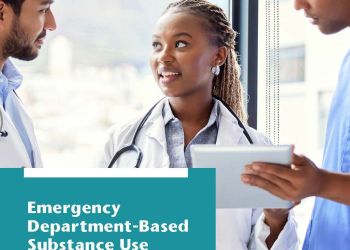Antimicrobial drugs like antibiotics transformed medical care, rendering once life-threatening infections easily treatable and reducing the risk of infection associated with surgery and chemotherapy. Advances in agriculture soon followed as farmers began using antimicrobial drugs to treat and prevent infections in their flocks and herds. However, overuse of these important drugs in both human and animal contexts has led to mounting concerns around the development of resistance.
As the threat of antimicrobial resistance (AMR) grows and affects human, animal, and environmental health, a multidisciplinary One Health approach and antimicrobial stewardship (AMS) efforts across these settings are necessary to optimize outcomes for patients, populations, and  communities as a whole. In recent years, local health departments (LHDs) have become increasingly involved in such efforts to ensure their communities are prepared. LHDs serve as chief community health strategists and are uniquely positioned to facilitate a coordinated approach across healthcare settings, enhancing infection prevention and control, responding to antimicrobial resistant infections, and promoting antimicrobial stewardship.
communities as a whole. In recent years, local health departments (LHDs) have become increasingly involved in such efforts to ensure their communities are prepared. LHDs serve as chief community health strategists and are uniquely positioned to facilitate a coordinated approach across healthcare settings, enhancing infection prevention and control, responding to antimicrobial resistant infections, and promoting antimicrobial stewardship.
Recognizing that success requires participation from a wide variety of stakeholders, the U.S. government launched the AMR Challenge to encourage domestic stakeholders and global partners across the One Health spectrum to formally commit to the fight against antimicrobial resistance. NACCHO joined the Challenge and commits to increasing the awareness and capacity of LHDs across the country to fight antimicrobial resistance and promote stewardship by sharing tools, resources, and lessons learned. Additionally, NACCHO will promote the critical role of LHDs in protecting their communities from antimicrobial resistance-related threats and support opportunities for LHDs to identify local-level commitments in support of the AMR Challenge.
The Long Beach Department of Health and Human Services (CA) also made an AMR Challenge commitment, and we had an opportunity to speak with their City Health Officer, Anissa Davis, MD, MPH, about their decision to join the AMR Challenge and the work they do to combat AMR.
Why did you decide to make this commitment and participate in the AMR challenge?
When we first learned about the AMR challenge, we immediately knew we wanted to participate. As a local health jurisdiction that works directly with acute care hospitals and skilled nursing facilities, we feel we have a responsibility to keep the importance of AMR on their radar and provide guidance and education to these facilities and their staff. While we had already made a commitment to focus on AMR in Long Beach on a local level, it felt good to commit to the AMR Challenge and participate in such a global effort as well.
What is the health department’s role in preventing and stopping the spread of AMR?
The Health Department’s role in AMR prevention is multi-faceted. In the past, our role focused on outbreak response, but prevention and control of AMR really requires getting ahead of it. Because of this, we focus much more on education and prevention efforts rather than traditional response efforts. This includes education on what AMR is, what to look for, and how to contain it within each facility.
What does your health department currently do to combat AMR and promote stewardship?
In January 2017, the Long Beach Health Department made carbapenem-resistant Enterobacteriaceae (CRE) reportable. Now, any acute care hospital or skilled nursing facility with a case of CRE must report it and include information on length of stay at the facility and possible exposures. We knew that CRE was prevalent in Southern California; however, prior to making CRE reportable, we did not know how prevalent it was in our own city. This made it difficult to detect outbreaks because, without a baseline, we could not know when we had a rise in cases.
Secondly, in collaboration with the California Department of Public Health (CDPH), we launched a CRE Collaborative earlier this year. We enrolled local skilled nursing facilities and acute care hospitals into a yearlong course that meets quarterly to discuss successes and challenges around CRE and AMR and to hear educational sessions with subject matter experts from across the state. This improves knowledge and prevention of AMR and creates a sense of community among different types of medical facilities and the Health Department. In the past, we did not communicate with each other on a daily basis. Now we have gotten to know each other, shared our contact information, and increased awareness of resources the health department can offer. There is a greater understanding that we are all in this together — that each facility and the Health Department play a role in preventing antibiotic resistance, instead of each facility working in a silo. In addition to the educational sessions, each enrolled facility has an all-day visit by a CDPH subject matter expert who works with the facility to identify gaps or improvements in their AMR management.
earlier this year. We enrolled local skilled nursing facilities and acute care hospitals into a yearlong course that meets quarterly to discuss successes and challenges around CRE and AMR and to hear educational sessions with subject matter experts from across the state. This improves knowledge and prevention of AMR and creates a sense of community among different types of medical facilities and the Health Department. In the past, we did not communicate with each other on a daily basis. Now we have gotten to know each other, shared our contact information, and increased awareness of resources the health department can offer. There is a greater understanding that we are all in this together — that each facility and the Health Department play a role in preventing antibiotic resistance, instead of each facility working in a silo. In addition to the educational sessions, each enrolled facility has an all-day visit by a CDPH subject matter expert who works with the facility to identify gaps or improvements in their AMR management.
What are you looking to do going forward? How do you hope to expand or grow your work?
Moving forward, we will be ending our year-long CRE Collaborative; however, we plan to continue the educational component through bi-annual meetings with healthcare facilities. We will continue to gather CRE data, generate CRE reports, and share the information with our healthcare facilities. In addition to focusing on CRE, we will continue to stay up-to-date on what is happening with AMR locally, nationally, and globally to be able to anticipate and prepare appropriately.
_______________________________________________________________________________________
Show your organization’s commitment to combatting AMR and demonstrate the importance of including LHDs in national conversations and decision-making on this issue by submitting your own AMR Challenge commitment here.
For more information on NACCHO’s work combatting antimicrobial resistance, check out our AMR fact sheet or the 2016 NACCHO blog series titled “Antimicrobial Resistance & Global Health Security – Collaborative Efforts in Disease Surveillance,” which explores monitoring systems for antimicrobial resistance, the importance of local health departments in tackling the resistance, and opportunities to strengthen local surveillance:
- The State of Disease Surveillance
- Collaborative Efforts in Disease Surveillance (Part 1)
- Collaborative Efforts in Disease Surveillance (Part 2)
Finally, stay tuned for more information on a new demonstration site project that NACCHO is establishing with local STD clinics to advance detection, treatment, prevention, and containment of resistant gonorrhea infections.


